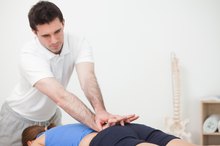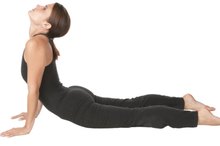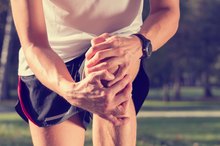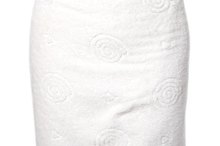Exercises to Strengthen the Colon Wall
The colon is a muscular organ located at the end of the digestive tract. The primary function of the colon is the reabsorption of water, minerals and electrolytes, and the elimination of waste. The colon, rectum and anal sphincter muscles control normal bowel movement. Damage or injury to the colon wall or anal sphincter muscles can impair function and result in waste accumulation, fecal incontinence, sluggish bowel movement, constipation and the recirculation of bacteria into the blood. Your physician may recommend exercises to strengthen the muscles in the colon wall to alleviate any associated health problems.
Colon Wall and Pelvic Floor Muscles
Your pelvic floor muscles extend from your tailbone and provide the necessary support for your internal abdominal and pelvic organs. These muscles lift, support and control your bladder, urethra and rectum. The muscles, particularly the levator ani and the puborectalis, are responsible for bowel movements and the ability to expel and retain stool. The levator ani muscles begin at the pelvic sidewalls and extend downward, forming a funnel in your pelvis and providing the necessary support for the anal canal and urethra in women. The puborectalis forms a ring of muscles that support the anal canal at the end of this funnel and is “U” shaped. Damage or injury to these muscles can lead to muscle weakness or spasms, resulting in constipation and bowel or fecal incontinence. Kegel exercises target and strengthen the muscles in your colon wall and pelvic floor 34.
- Your pelvic floor muscles extend from your tailbone and provide the necessary support for your internal abdominal and pelvic organs.
- The levator ani muscles begin at the pelvic sidewalls and extend downward, forming a funnel in your pelvis and providing the necessary support for the anal canal and urethra in women.
Kegel Exercises
What Is the Function of the Rectum?
Learn More
Kegel exercises target and strengthen your pelvic floor muscles, supporting the rectum and colon wall 34. By engaging in Kegel exercises, you increase the health and function of the colon, levator ani and the puborectalis muscles, and prevent the leakage of stool and fecal incontinence 4. Kegel exercises also strengthen the colon, rectum and anal sphincter muscles, and help men to control their bowel movements 4. These exercises also improve muscular contraction or peristaltic activity in the colon, improving normal bowel movement. Kegel exercises are also beneficial to men who have had some form of trauma or injury to the anal sphincter muscles, colon wall or whose muscle strength has diminished with age 4.
Finding Your Pelvic Floor Muscles
To ensure you are properly targeting your pelvic muscles, begin by sitting or standing in front a toilet. Stop the flow of urine by tightening your anal sphincter muscles or the ring of muscles in your anus. You can also imagine trying to stop the passage of gas by tightening the ring of muscles in your anus. As you stop the passing of gas, you should feel a pulling sensation in your rectum and buttocks. Once you have identified the right muscles, you can proceed to performing Kegel exercises 4.
- To ensure you are properly targeting your pelvic muscles, begin by sitting or standing in front a toilet.
- You can also imagine trying to stop the passage of gas by tightening the ring of muscles in your anus.
Kegel Exercises
Physical Therapy for a Broken Tailbone
Learn More
Kegel exercises can be performed while lying, sitting or standing 4. Begin by contracting the muscles around your anus. Hold this for 10 seconds and relax for another 10 seconds. As you perform this exercise, relax your thigh, abdominal and back muscles. As you progress with the exercise and your pelvic floor muscles strengthen, increase the duration and strength of each contraction.
- Kegel exercises can be performed while lying, sitting or standing 4.
- As you progress with the exercise and your pelvic floor muscles strengthen, increase the duration and strength of each contraction.
Related Articles
References
Writer Bio
Jessica Wellons has been writing professionally since 2007. She is a scientific writer and fervent health enthusiast writing for The American College of Preventative Medicine and Writing Assistance Inc. She is pursuing a doctoral degree in clinical medicine from the University of North Carolina and has a Master of Science in clinical pathology from the University of North Carolina.








